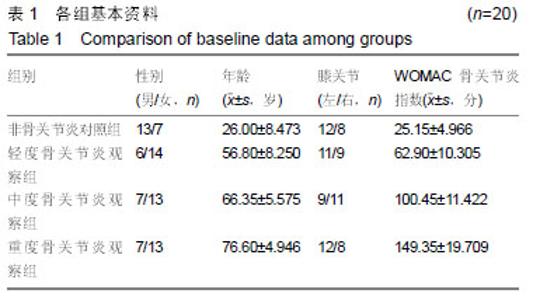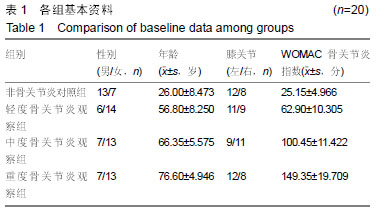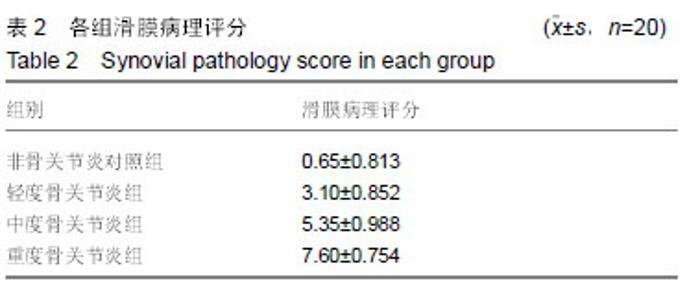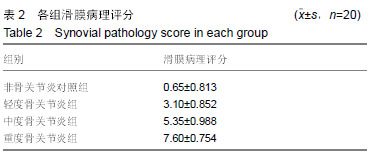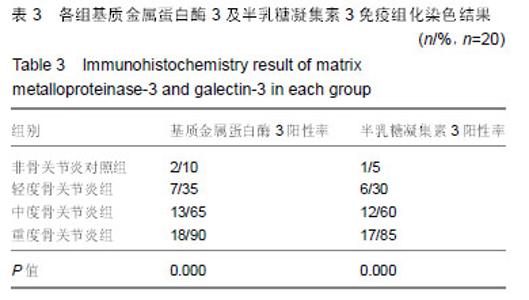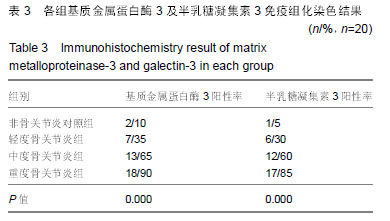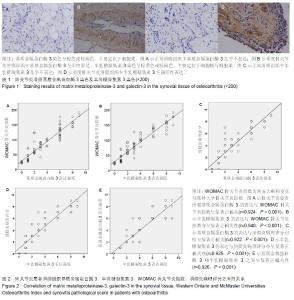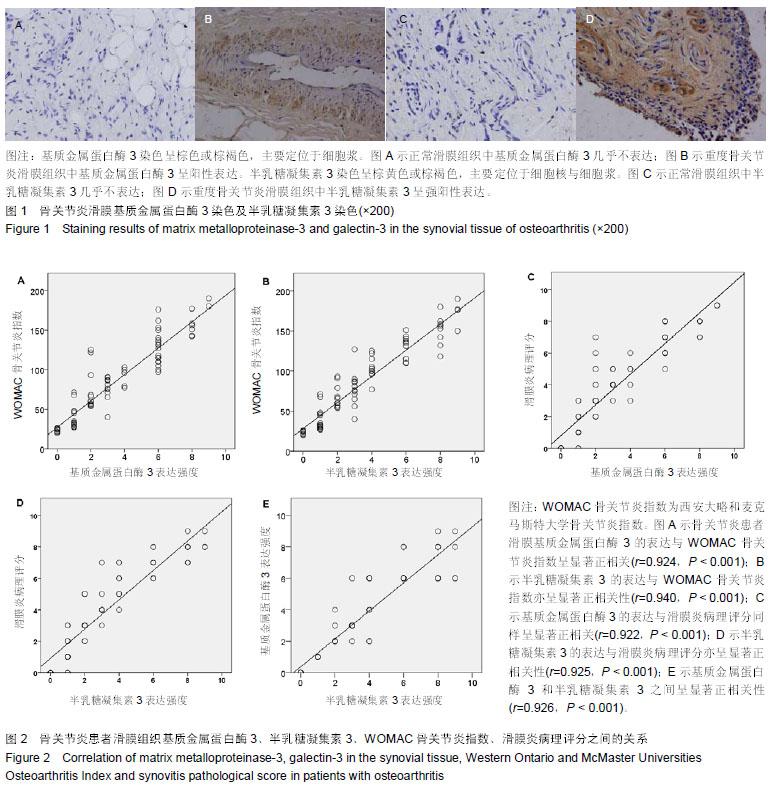| [1]Loeser RF. Aging processes and the development of osteoarthritis. Curr Opin Rheumatol. 2013;25(1): 108-113.[2]Davis AM, MacKay C. Osteoarthritis year in review: outcome of rehabilitation. Osteoarthritis Cartilage. 2013; 21(10): 1414-1424.[3]王斌,邢丹,董圣杰,等. 中国膝骨关节炎流行病学和疾病负担的系统评价[J]. 中国循证医学杂志,2018,18(2):134-142.[4]Li Y, Wei X, Zhou J, et al. The age-related changes in cartilage and osteoarthritis. Biomed Res Int. 2013;2013: 916530.[5]钱佳慧,吴侃,罗会强,等. 中国老年人日常生活活动能力损失现况及影响因素分析[J]. 中华流行病学杂志,2016,37(9): 1272-1276.[6]Milner JM, Patel A, Davidson RK, et al. Matriptase is a novel initiator of cartilage matrix degradation in osteoarthritis. Arthritis Rheum. 2010;62(7): 1955-66.[7]Murphy G, Lee MH. What are the roles of metalloproteinases in cartilage and bone damage. Ann Rheum Dis. 2005;64 Suppl 4: iv44-47.[8]Malemud CJ. Matrix Metalloproteinases and Synovial Joint Pathology. Prog Mol Biol Transl Sci. 2017; 148: 305-325.[9]马丽艳,宋旭东,张德新,等. MMP-13和 Galectin-3在骨性关节炎滑膜组织中的临床意义[J]. 中国骨与关节杂志, 2013,(5): 280-284.[10]Yu Q, Shen W, Zhou H, et al. Knockdown of LI-cadherin alters expression of matrix metalloproteinase-2 and -9 and galectin-3. Mol Med Rep. 2016;13(5):4469-4474.[11]Wang YG, Kim SJ, Baek JH, et al. Galectin-3 increases the motility of mouse melanoma cells by regulating matrix metalloproteinase-1 expression. Exp Mol Med. 2012;44(6): 387-393.[12]Che ATNA, Lau SF, Mohamed S. Ficus deltoidea Prevented Bone Loss in Preclinical Osteoporosis/Osteoarthritis Model by Suppressing Inflammation. Calcif Tissue Int. 2018;103(4): 388-399.[13]中华医学会骨科学分会.骨关节炎诊治指南(2007年版)[J]. 中国矫形外科杂志, 2014,22(3):287-288.[14]庞坚,曹月龙,陈博,等. 基于WOMAC与AIMS2-SF评分的膝骨关节炎主症与生存质量的多元线性回归分析[J]. 中国中医骨伤科杂志, 2013,21(9):13-14,30.[15]Christoforakis JJ, Sanchez-Ballester J, Hunt N, et al. Synovial shelves of the knee: association with chondral lesions. Knee Surg Sports Traumatol Arthrosc. 2006;14(12):1292-1298.[16]于萍,步宏,王华,等. 免疫组化结果的图像分析与人工计数方法的对比研究[J]. 生物医学工程学杂志,2003,20(2):288-290.[17]Scanzello CR, Goldring SR. The role of synovitis in osteoarthritis pathogenesis. Bone. 2012;51(2):249-257.[18]Sokolove J, Lepus CM. Role of inflammation in the pathogenesis of osteoarthritis: latest findings and interpretations. Ther Adv Musculoskelet Dis. 2013;5(2):77.[19]Meszaros E, Malemud CJ. Prospects for treating osteoarthritis: enzyme-protein interactions regulating matrix metalloproteinase activity. Ther Adv Chronic Dis. 2012;3(5): 219-229.[20]李龙滕,李彦林,王坤,等. TN14003体外阻断SDF-1/CXCR4信号通路对骨关节炎患者软骨组织分泌基质金属蛋白酶3、9、13水平的影响[J]. 中国运动医学杂志,2017,36(1):44-47.[21]朱新辉,徐大伟,黄巍,等. 膝关节骨性关节炎血液和滑液MMP-3水平与其病变程度的相关性[J]. 中国骨质疏松杂志, 2013,19(3): 203-206.[22]刘琳琳,傅捷,张树明,等. IL-6联合 MMP-3在早期诊断骨性关节炎中表达及临床意义[J]. 中国实验诊断学, 2017,21(2): 273-276.[23]Melo FH, Butera D, Junqueira MS, et al. The promigratory activity of the matricellular protein galectin-3 depends on the activation of PI-3 kinase. PLoS One. 2011;6(12):e29313.Janelle-Montcalm A, Boileau C, Poirier F, et al. Extracellular localization of galectin-3 has a deleterious role in joint tissues. Arthritis Res Ther. 2007;9(1):R20. |
